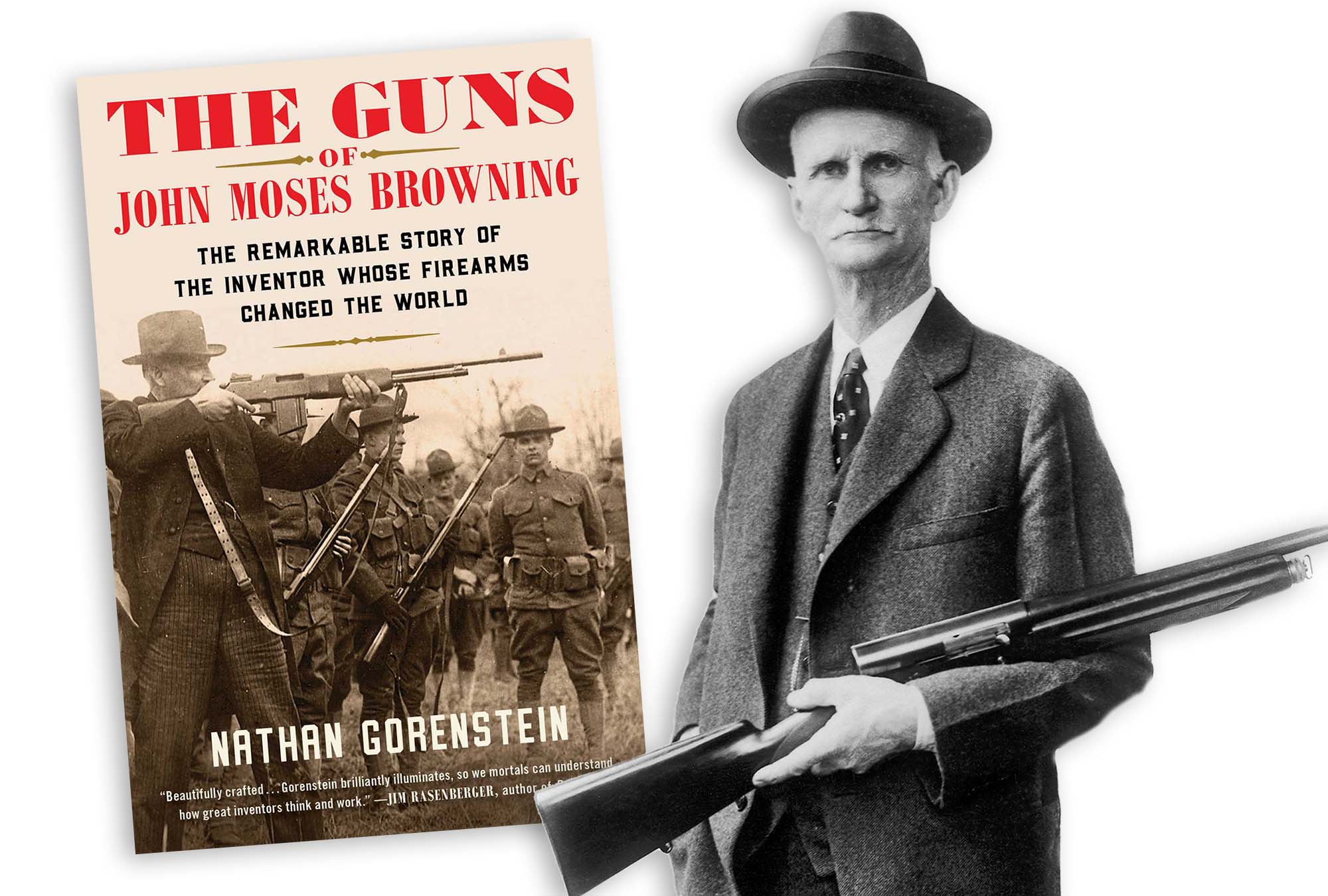He received more than 120 firearm patents: Who is John Moses Browning?
John Moses Browning spent his entire life devoted to firearms and their design. He is regarded as one of the most creative and prolific gun designers of all time, reportedly from the time he started working in his father's gunsmith shop at the age of seven until the day he died, while he was still working on a gun design 64 years later.

Browning Arms is one of the companies whose history dates back many years. Browning's founder, John Moses Browning, was born in Ogden, Utah, in 1855 and spent most of his early youth with his father, in his father's shop and gun repair shop.
In 1878, with his father's encouragement, he designed and began producing a single-shot rifle that he thought was superior. After a production run of approximately 600 rifles, Winchester Repeating Arms attracted the attention of the masterfully designed 1885 Winchester rifle. This launched a series of legendary products that he licensed to Winchester, including the Model 1886, Model 1892, 1887 shotgun, Model 94, and Theodore Roosevelt's favorite, the 1895.
The life story of John Moses Browning
He was born on January 23, 1855, in Ogden, 35 miles north of Salt Lake City (Utah, USA), between Salt Lake City (Utah, USA) and the Wasatch-Cache National Forest.
John Moses Browning (January 23, 1855 – November 26, 1926) was an American firearm designer who developed many varieties of military and civilian firearms, cartridges, and gun mechanisms – many of which are still in use around the world. He made his first firearm at age 13 in his father's gun shop and was awarded the first of his 128 firearm patents on October 7, 1879, at the age of 24. He is regarded as one of the most successful firearms designers of the 19th and 20th centuries and pioneered the development of modern repeating, semi-automatic, and automatic firearms.
Gunmaking was the tradition in young John Moses' family, as his father was a weapons expert who was already responsible for a number of innovations. As a child, he spent time in his father's workshop and knew the name of every part of a gun without reading it.
Starting from the age of 6, he made fishing accessories from pieces of metal that he shaped on a children's loom made from a wooden chest.
At just 23 years old, he received his first patent for the "J M Browning Single Shot Rifle". This invention simplifies the impact mechanism, making it more durable and reliable.
Shortly before his death, his father handed over his business to John Moses. With his brother Matt, with less than a thousand dollars in the bank and no experience using machine tools, the younger Browning transformed the modest store into a small gun shop employing seven employees.
Another state representative in the US encountered a gun made by the Browning brothers. His inventions intrigued him and he sent a copy to his superiors at company headquarters. They were so impressed that Winchester's general manager took a six-day trip to meet the Browning brothers. A journey in Wild West conditions...
Although these two young men in their twenties were surprised to find themselves in an old workshop, they were not deceived by appearances and made commercial agreements as soon as possible. Thanks to this smart decision, collaborations that will last for decades began.
Over the years, Browning licensed dozens of inventions and firearms to several manufacturers. He invented almost everything in the field of firearms. The creativity and perfection of his inventions were so high that they could not be improved or modified for years.
The world of firearms is like the world of art: The success of creators depends on the interest of consumers. In 1897, Herstal Fabrique Nationale in Belgium became aware of the mechanism of the 7.65 Browning pistol, which included a new locking mechanism. Managers quickly evaluated this situation and immediately obtained a manufacturing license.
Thus began a period of uninterrupted cooperation between the inventor on the Great Salt Lake and the factory on the banks of the Meuse River.
Browning reached the pinnacle of his craft with the Auto-5 semi-automatic shotgun; This was a tremendous commercial success and prompted John Moses' first visit to the Herstal workshops.
However, his worldwide recognition undoubtedly started with the 9 mm Hi-Power semi-automatic pistol. More than 10 million of these legendary pistols have been sold. From 1907 it was adopted by police and armed forces all over the world. The general name for this type of weapon is "Browning", indicating its universal acclaim and acceptance.
Browning's success is by no means the result of luck. Like all American pioneers of that time, he turned luck to his advantage only with great effort. The strength of his character and the tenacity of his principles were extraordinary.
Thus, towards the end of his life, he rejected the honorary title given by a university for this simple but important reason: "He would not accept anything that was not the work of his own hands."
John Moses Browning died of a heart attack on November 26, 1926, while working in his office in Herstal, Belgium. It was his 61st visit to Belgium.
His body was returned to the United States and buried with military honors. His son Val continued his cooperation with the Belgian factory uninterrupted. This collaboration continues today.
